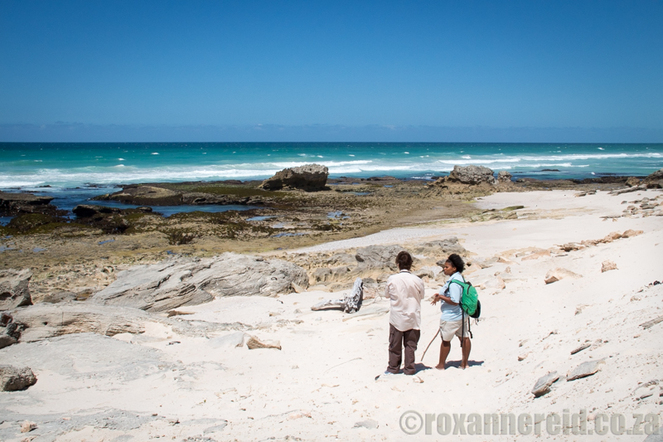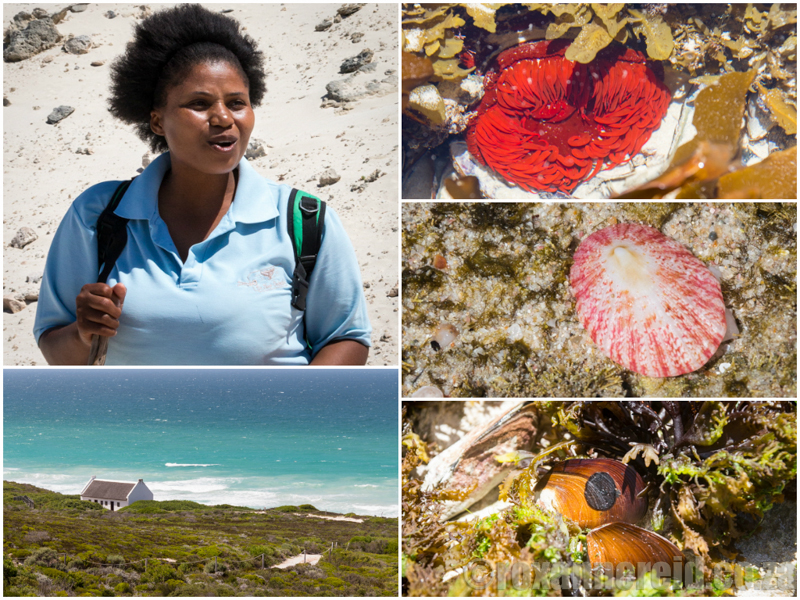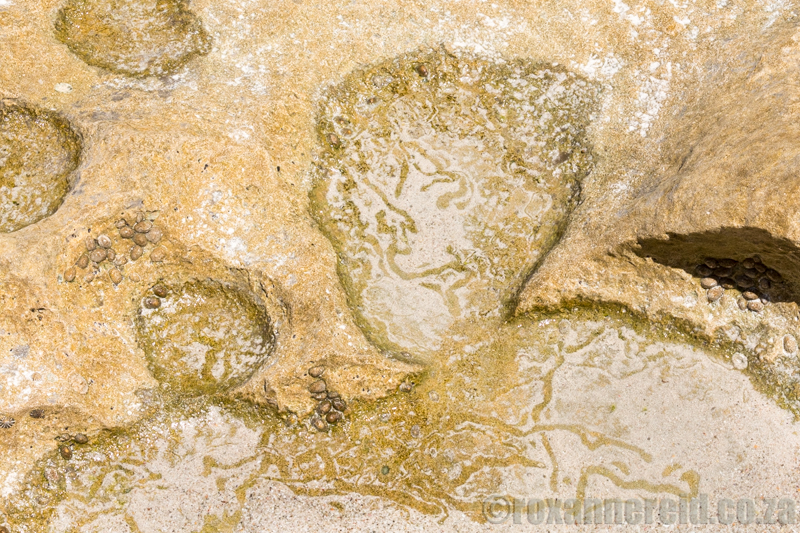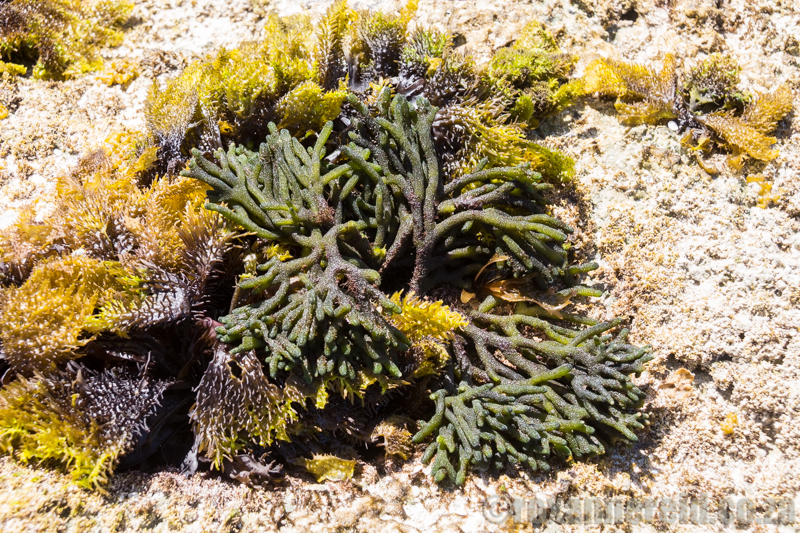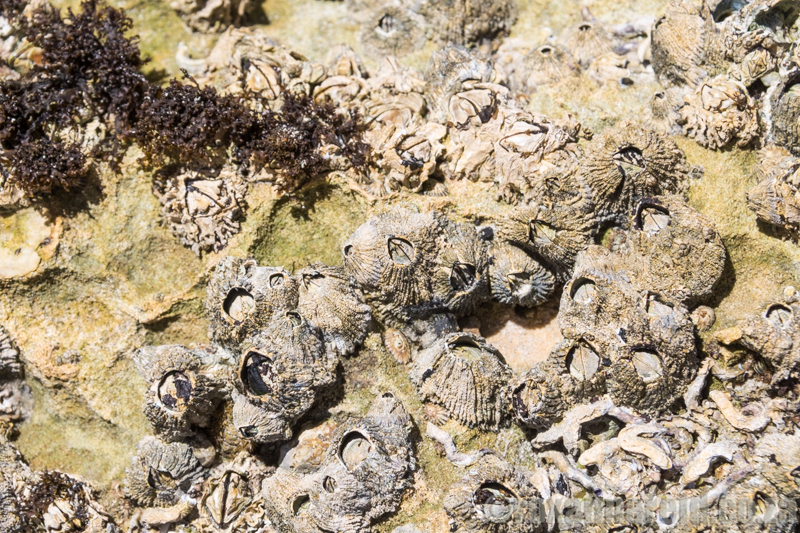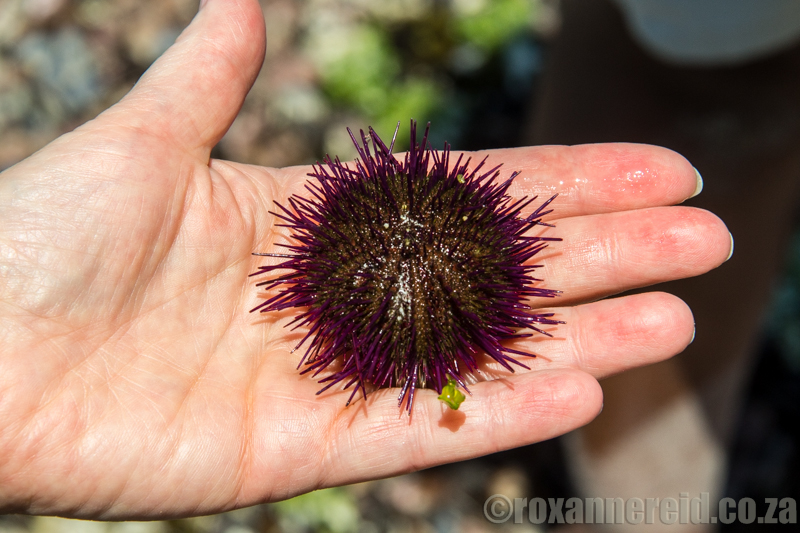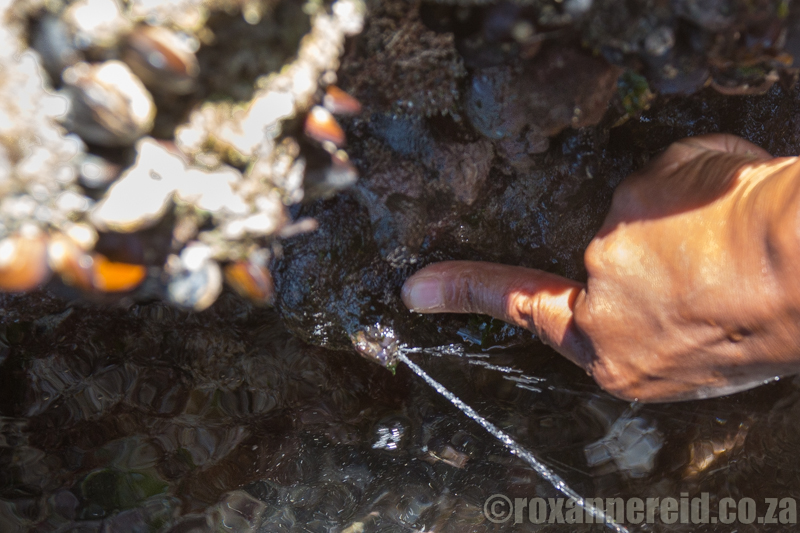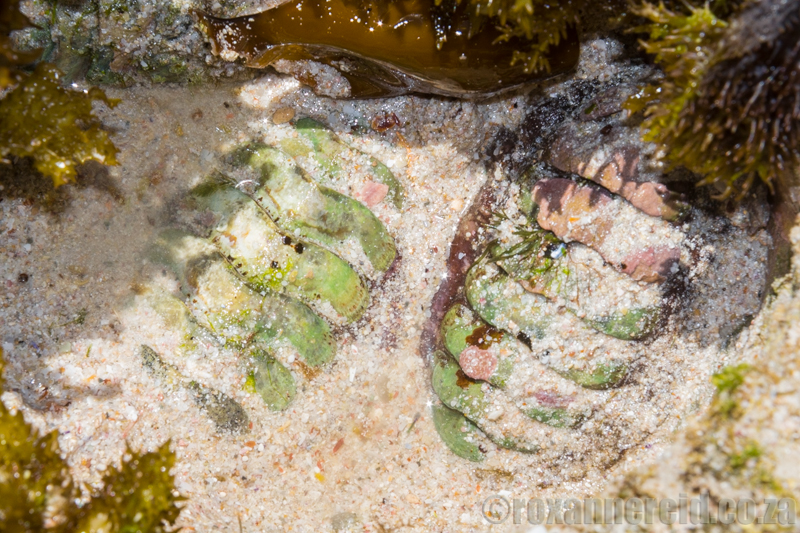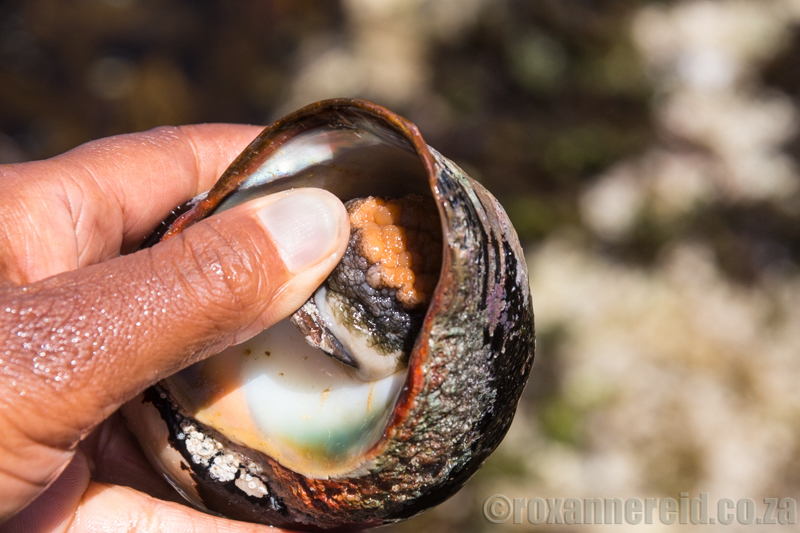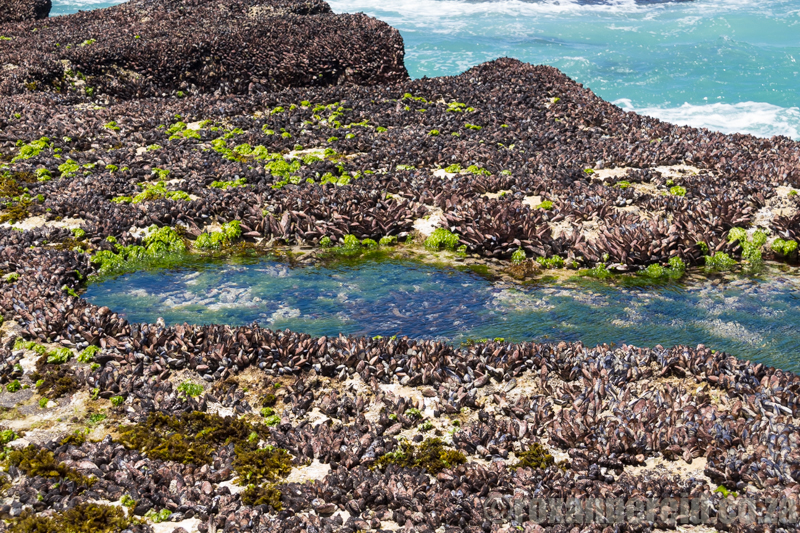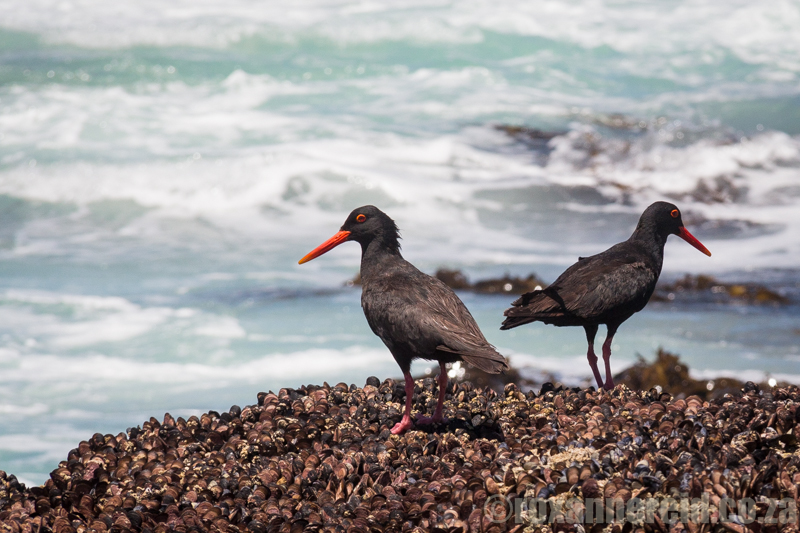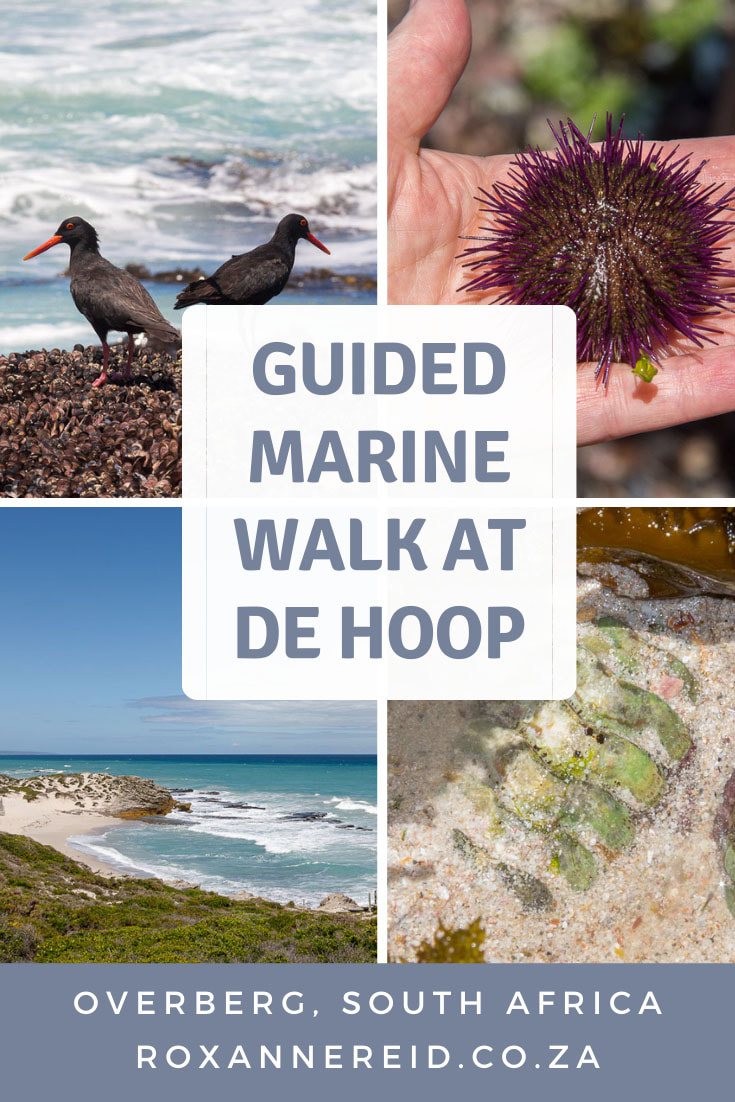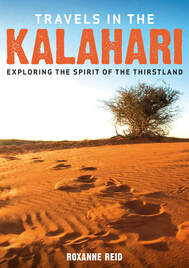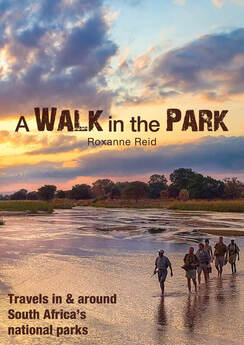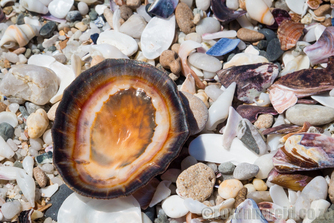
It was February and as hot as Hades. Yet the guided marine walk at De Hoop Nature Reserve that would see us poking about in rock pools was scheduled to start at 11am – because that was low tide – and continue under the noonday heat. We nearly chickened out.
We learnt that there are two distinct intertidal zones. Closer to shore is the dry area, where you’ll find only creatures that can adapt to being dry for six to eight hours a day, such as limpets, barnacles and tongue weed. Nearer to the sea is the wetter zone, where you’ll find mussels, abalone and other creatures that have to attach very strongly to the rocks so the movement of the sea doesn’t knock them loose.
‘There are 23 limpet species in South Africa and at De Hoop we have 18 of them,’ she said. ‘We’re No. 1 in the whole world for limpets. The next is the Mediterranean, which has only 10 species.’
‘I call these the popes of the limpet world because they have a small hat and a large body,’ she said. Usually when a limpet attaches itself to the rocks, its shell totally covers it and makes a good seal. But the keyhole limpet’s body is fleshy and you can clearly see it bulging out under the small shell. ‘That’s why they have to live under rocks, so they don’t dry out in the sun – because you don’t want to see biltong limpets.’
She told us that the blood of keyhole limpets is being used in California to create medicine to treat leukaemia. Luckily, the blood is harvested without killing the limpet.
‘Their poop is important to coral,’ Pinkey explained. ‘It’s 50% calcium carbonate which the coral uses to create its exoskeleton.’
Territory for a pair of oystercatchers can be 800 to 1000 square metres. ‘And they don’t go to court for divorce papers,’ said Pinkey. ‘They mate for life and only take another mate if one of them dies.’ Some have been known to remain together for 20 years.
It’s just one of many reasons why the De Hoop Nature Reserve is so special.
Need to know
The interpretive marine walk lasts about 3 hours.
You may also enjoy
15 things to do at De Hoop Nature Reserve in the Overberg
Cape Nature reserves: from Cederberg to Kogelberg and more
Like it? Pin this image!
